Table Of Contents
- What is Embodied Carbon?
- Why do I need early stage embodied carbon?
- How does cove.tool optimize for Embodied Carbon?
- What do I need to optimize for Embodied Carbon?
- What is EC3 and how to use the EC3 tool?
- 1. Login into the EC3
- 2. Go to Find and Compare Materials and Select Your Category
- 3. Search for building products by adding filters
- 4. Select the products you would like to evaluate
- 5. Save the new inputs and OPTIMIZE
- Where else can I find Embodied Carbon Values?
Table Of Contents
- What is Embodied Carbon?
- Why do I need early stage embodied carbon?
- How does cove.tool optimize for Embodied Carbon?
- What do I need to optimize for Embodied Carbon?
- What is EC3 and how to use the EC3 tool?
- 1. Login into the EC3
- 2. Go to Find and Compare Materials and Select Your Category
- 3. Search for building products by adding filters
- 4. Select the products you would like to evaluate
- 5. Save the new inputs and OPTIMIZE
- Where else can I find Embodied Carbon Values?
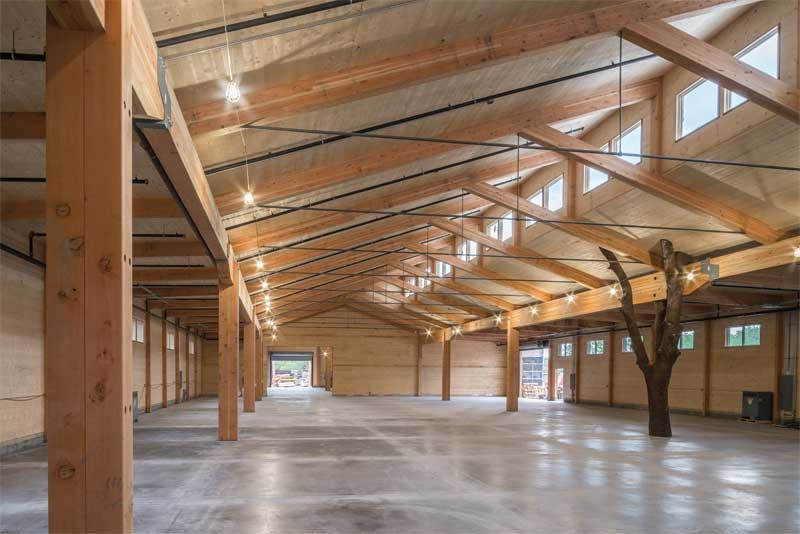
What is Embodied Carbon?
Embodied carbon refers to C02 (carbon dioxide) emitted during the extraction, manufacture, transportation, construction, replacement, and deconstruction of building materials, together with end of life emissions. This is different from Carbon Emissions, and one of the many metrics used to understand your building's Carbon Footprint. Embodied carbon is usually expressed at the product level in kgCO2e (kilograms of CO2e), and at the building level in 1,000 kgCO2e (Tonnes of C02e).
Embodied carbon can be measured from cradle-to-gate, cradle-to-site, cradle-to-end of construction, cradle-to-grave, or even cradle-to-cradle. The typical embodied carbon data sets are cradle-to-gate, which is an assessment of a partial product life cycle from resource extraction (cradle) to the factory gate (ie, before it is transported to the consumer). The standard building material does not have a known Embodied Carbon value, however the metric has gained popularity through the growing recognition and code/certification requirements of EPDs (Environmental Product Declarations). More about EPDs later.
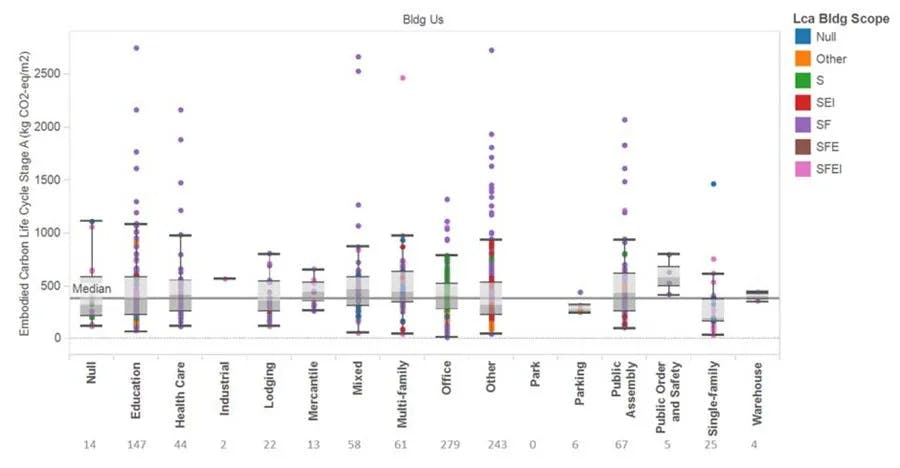
Why do I need early stage embodied carbon?
Buildings contribute to 40% of all the CO2 emissions worldwide. Most of this is due to energy required to operate existing buildings, however, between now and 2060 the world’s population is expected to double the amount of building floor space. Carbon Emissions will soon be outpaced by Embodied Carbon — the emissions associated with building construction, including extracting, transporting, and manufacturing materials. Over the past two decades, we’ve made significant progress in reducing carbon emissions associated with operating buildings. However, according to Architecture 2030, “new research from the IPCC, the UN, and the scientific community stresses the critical importance of a 2030 milestone: if we do not achieve a 45-55% reduction in total global emissions by 2030 we will have lost the opportunity to meet the 1.5/2 ℃ warming threshold and climate change will become irreversible. The immediate focus for embodied carbon reductions must therefore be on the next decade. Annually, the embodied carbon of building structure, substructure, and enclosures are responsible for 11% of global GHG emissions and 28% of global building sector emissions. Eliminating these emissions is key to addressing climate change and meeting Paris Climate Agreement targets.”
Read more about the Carbon Leadership initiative here.
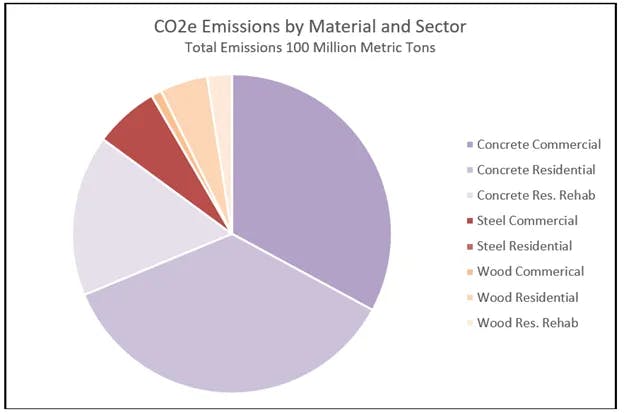
How does cove.tool optimize for Embodied Carbon?
Cove.tool has added embodied carbon as an optional property input in the Change Options page and as a new column category in the Optimization Tool. In the former users can add embodied carbon values for each product, and in the latter can analyze the embodied carbon in CO2e (tonnes) for each available bundle option. Read more about optimization here.
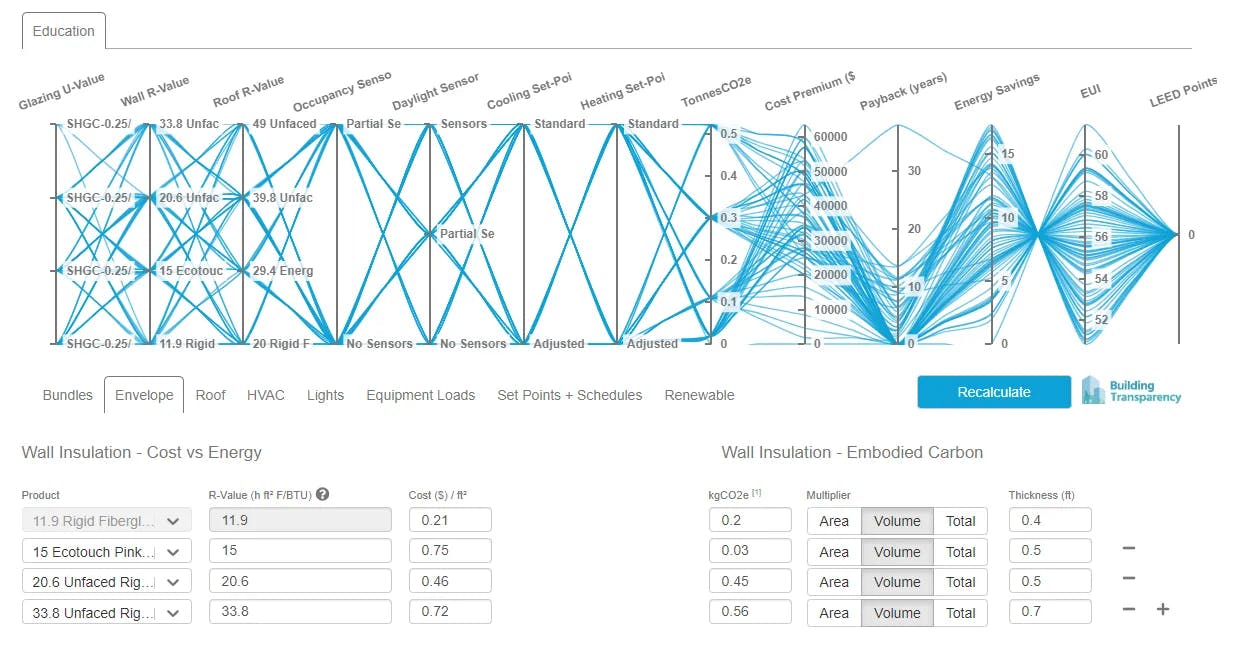
What do I need to optimize for Embodied Carbon?
To add embodied carbon to your building performance analysis, you only need the kgCO2e value and multiplier unit of the building product which the user would like to evaluate. These inputs are not yet automated by cove.tool, but can be found through the product's manufacturer website, on a products EPD certificate, or through the EC3 portal. The last option is available through cove.tool as the Building Transparency button at the top on each Change Options Page. The next section will go into using the EC3 Database to locate your building products' embodied carbon value.
What is EC3 and how to use the EC3 tool?
The Embodied Carbon in Construction Calculator (EC3) tool, is an open-source industry-leading sustainability platform that helps professionals find, assess, compare, benchmark, and reduce the amount of embodied carbon used in construction. The database and tool is an open source platform from the Carbon Leadership Forum and C-Change Labs, as part of an integrated ecosystem of data, tools, and knowledge that empowers, informs and inspires low carbon solutions.
To use the tool to find Embodied Carbon Values for your cove.tool project follow these 5 easy steps
1. Login into the EC3
The EC3 tool requires you to have an account in order to use the tools. Make a profile and start your search for sustainable building materials. Note that the EC3 tool is a Public Beta Test service and has its own terms of agreement that you may choose to agree or not agree to pursue.
2. Go to Find and Compare Materials and Select Your Category
The EC3 has a list of pages for users to explore. For the purposes of cove.tool you only need to use the Find & Compare Materials tab. If you would like to learn more about the other pages of the EC3 platform, the Carbon Leadership Forum along with Sustainable Minds YouTube Page has published a video workshop which you can see here (the tool demonstration starts at time 36:38). Under the Find and Compare Materials Tab, 9 building product categories will be listed below. Select the Category which would encompass the building product you are searching for.
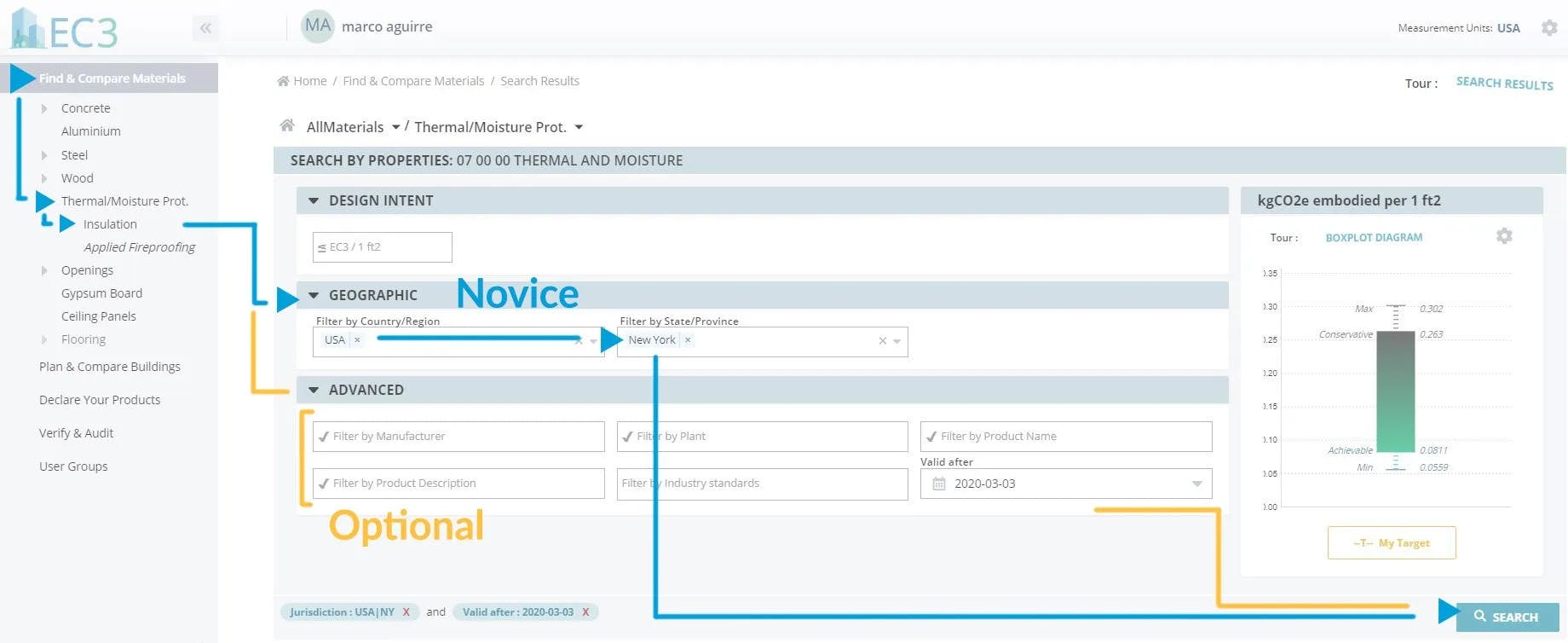
3. Search for building products by adding filters
Each category will open to a page where you can add filters to narrow your search (see image above). Also be aware that the EC3 is a new platform (released Nov.2019) and its initial database only contains established products with EPD certificates. Therefore users who are searching for a certain product, from a certain manufacturer/region/ property, may not see it listed in the EC3 Database. Cove.tool recommends new users to get familiar with EC3 tool and the available products by starting with the geographic and/or product description filters to search the product library. As EPDs and the EC3 continues to grow in demand, the archive will continue to expand. Users can also start encouraging their manufacturers to supply their product list with embodied carbon metrics to the EC3 to expedite the growth of the database. Below is the number of products contained as of March 3, 2020; note that some categories are far more extensive than others, so be prepared to use other research method to find embodied carbon values.
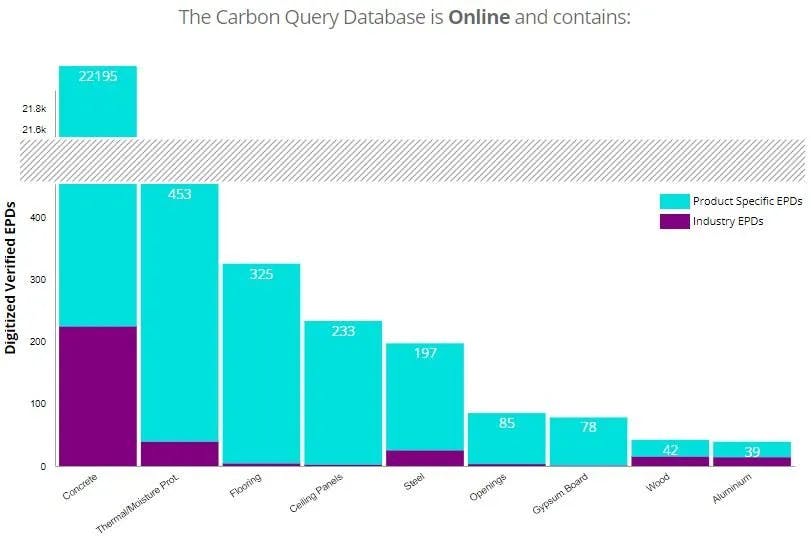
4. Select the products you would like to evaluate
Once the users have located a building product they would like to evaluate, the kgCO2e value will be listed in the final column of each product row. Copy and paste this value to the cove.tool kgCO2e input. If no products were found that meet the users' requirements, we recommend searching for the value via the manufacturer's website.

5. Save the new inputs and OPTIMIZE
After collecting the embodied carbon inputs from the EC3 Tool, paste them into the Changes Options Page. When you have outfitted your building options with Embodied Carbon values, save the changes and click the optimize button.
Where else can I find Embodied Carbon Values?
If the EC3 Tool did not contain the product you were looking for, the next best resource is going to be finding your products, or a similar product's, Environmental Product Declaration (EPD). EPDs are a standardized assessment of a product or building system's effect on the environment. The assessment includes declaring the product's or building system's global warming potential (embodied carbon), energy and resource depletion, chemical makeup, waste generation, and more. Although a variety of EPD programs exist, a verified EPD will follow the ISO (International Organization for Standardization) 14025, 14040, 14044, and EN 15804 or ISO 21930 and have at least a cradle-to-gate scope. Manufacturers who have undergone the process to declare their products, will typically list these forms as .pdf files on their websites. So when searching for your ideal product searching "Manufacturer Name" + EPD will help determine whether such a document exists.
Once you have found an EPD, the next step is locating the Embodied Carbon value. Below are two tables taken from example EPDs found online. The first is a glazing product (EPD) from a GuardianGlass. The second is a wall insulation product (EPD) from CertainTeed-SaintGobin. In both examples the embodied carbon value is written as the Global Warming Potential (GWP), and has columns listed for different stages of the life cycle assessment. Before you start selecting your embodied carbon value, make sure that this row also uses the same units as embodied carbon, kgCO2e[q]. To calculate the embodied carbon value required for the cove.tool optimization, only select, or add up, the GPW value from the cradle-to-gate stages of the table. We have highlighted which sections below. If you did it correctly the embodied carbon for the Glass product (above) is .00145 kgCO2e, and for the Insulation product (below) is 0.94 kgCO2e.

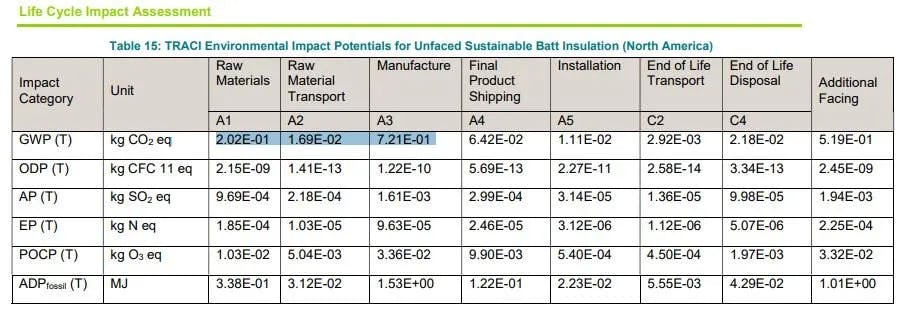
Click here to learn more about embodied carbon optimization.
